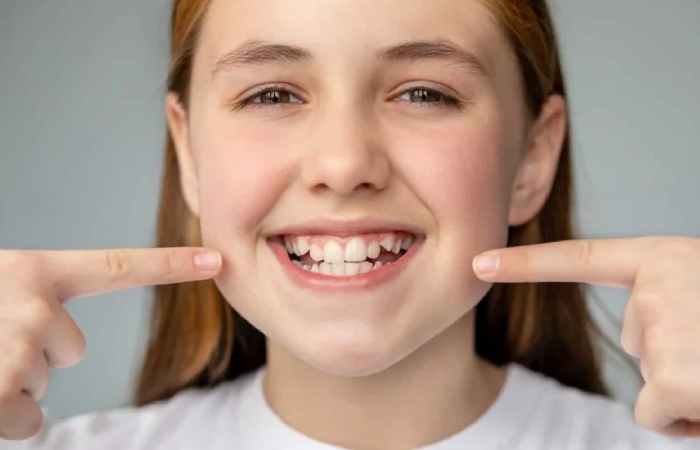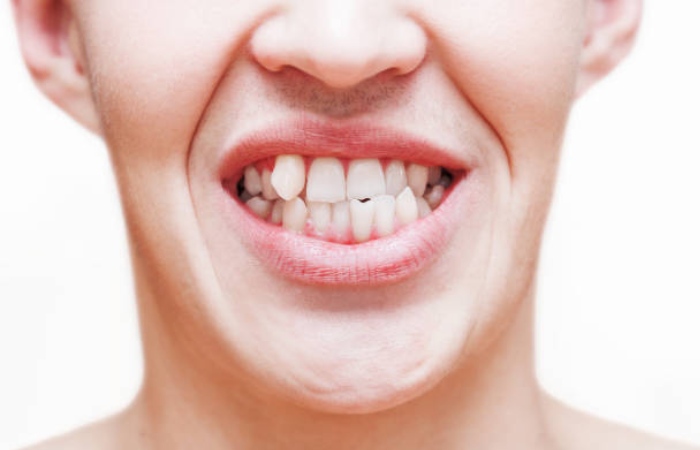Table of Contents
Introduction
Jagged teeth: for those who end up with one or more uneven jagged teeth that scratch their mouth or hide their teeth behind their hand, they don’t have to worry about trying to live with such a thing if they don’t want to.
If a tooth has always been jagged, or has been cracked or chipped, there are many ways the professional medical advice of your dentist can help straighten it, and some of these can be found below.
This is because many permanent teeth can look bumpy when they first come in, with small, serrated ridges along the top edge of the front teeth.
Those bumps on a baby’s new adult teeth are called mamelons and are completely normal.
Eventually these harmless lumps disappear as they are bumpy and wear away.
What Jagged Teeth?

Jagged teeth, including wisdom teeth, are somewhat jagged that has a rough, irregular shape or edge with many sharp points.
However, you will probably notice that these teeth will look very different from your front teeth.
Specifically, they often appear disproportionately larger and also have irregular projections on top.
Mamelons usually occur on permanent or permanent teeth.
They are most noticeable up to the age of 10, according to a 2020 study. The study also reported that mamelons usually go away by the time you’re around 25 years old.
So what about the jagged teeth? Dentists believe that these jagged areas simply wear away over time.
Your efforts to eat and simply use your teeth make the mamelons less noticeable as you age.
It is true that some people keep the nipples for a longer time. This tends to be true for people who do not have a normal bite impact, but have more of an open bite impact.
People who keep their mamelons longer tend to have a bite where the upper and lower front teeth do not overlap.
Also, this makes it more difficult for the teeth to rub against each other or bite into food effectively, so the nipples don’t wear down as they normally would.
Is It Normal To Have Jagged Teeth?

You may have noticed that they seem to have jagged teeth and irregular appearance.
Don’t worry—your child’s uneven teeth aren’t a sign that a dental visit is in their immediate future—unless it’s time for their six-month dental checkup!
If you’re concerned that the rough bumps on your child’s first permanent teeth look like a jagged knife, this article is for you.
It’s understandable that a mouth full of uneven teeth can be cause for concern, but it’s actually a harmless and normal stage of development.
It is natural for you as a parent to worry about many aspects of your child’s development, but in the case of these lumpy teeth in your child, you can go ahead and relax.
Jagged Teeth Cause
The cause of uneven teeth is when the tooth is cracked or chipped, which can leave an uneven appearance.
And if the nerve in your tooth is exposed, you may feel pain.
Accidents happen! And falling, getting hit in the mouth, or biting into something hard are common accidental causes of a chipped or broken tooth.
Your uneven teeth can also break when decay or large old fillings weaken them, making them more susceptible to injury.
We recommend it to prevent nerve damage; You should see your dentist right away if any of your teeth are chipped or broken.
What Is The Treatment Of Jagged Teeth?

However, cosmetic dentists can usually adjust jagged teeth with one of several cosmetic approaches.
These include:
Connection. This process involves applying a special resin to the baby’s teeth, which helps shape the teeth. Dentists use bonding to correct irregularly shaped teeth and short teeth.
shaped. This process involves removing some of the tooth enamel to shape and smooth the appearance of the teeth. Dentists also call this procedure enamel plastics.
If your child has an open bite impaction, treatments are available, according to a 2016 Trusted Source study.
Treatments for open bite impactions depend on the underlying cause of an open bite.
For example, some people have very short front teeth that don’t touch, while others have abnormalities in their back teeth that prevent them from touching.
A dentist should carefully evaluate possible underlying causes before recommending treatments.
Some treatments may include:
orthodontic treatments, such as braces, to correct a person’s bite
extraction of teeth, sometimes replacing them with dental implants
In rare cases, a doctor may recommend surgery called orthognathic (jaw) surgery to correct bite abnormalities.
This typically only occurs if the position of a person’s jaw causes:
Uneven teeth in adults are often the result of chipping related to:
It is important not to ignore a cracked or chipped tooth because if left untreated, the cracked tooth can further weaken and expose the soft inner layers of the tooth.
This can involve:
Treatments for chipped or jagged teeth in adults are a little different than treatments for young people.
Each of these interventions can improve the aesthetic appearance of the teeth. Your dentist can evaluate your teeth and make recommendations about which surgeries can help improve and strengthen the appearance of your teeth.
How To Fix Jagged Teeth At Home

Avoiding certain habits known to contribute to tooth chipping can help prevent pain and dentist’s bills.
- Refrain from chewing on hard objects, such as ice or pens
- Refraining from using your teeth as an “opener” or “tool” for boxes, packages, paper clips, or other items
- Wear a protective mouth guard or night guard if you grind your teeth
- Wear a mouth-guard if you play contact sports, such as soccer or basketball
- Some important dental health practices that can help avoid complications include caring for your teeth through:
- Regular brushing
- Visits to the dentist twice a year
- Eat a balanced diet rich in vitamins and minerals such as calcium and vitamin D
Conclusion
Jagged teeth in a child are a normal variation.
They tend to become smooth in appearance as a youngster gets older.
However, if you or your children are feeling more self-conscious about what a smile looks like, or if uneven teeth are the result of chips, a dentist can usually fix the edges by adding dental resin or filing the edges.


